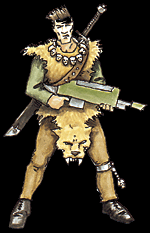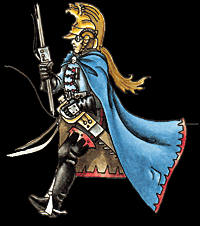For those of you looking at what the guard issues as standard kit an wondering if it's missing something, here's an excerp from
The Modern Warrior’s Combat Load
Dismounted Operations in Afghanistan
April - May 2003
Equipment Common to Riflemen:
A. Worn on Body/Uniform:
• M4 Carbine with PEQ-2 Laser/PAQ-4 Laser, ACOG/CCO, and 30 rounds of 5.56mm ball ammunition.
• Desert Camouflage Uniform with Infrared Tape on left sleeve (1”x1”).
• Desert Combat Boots.
• Dog Tags.
• ID Card.
• Undershirt.
• Socks.
• Tactical gloves.
• Interceptor Body Armor with two Small Arms Protective Inserts.
• Advanced Combat Helmet with night vision mounting plate.
• Rigger belt.
• Notebook and pen.
• Watch.
• Knee and elbow pads.
• Sun, Sand, and Dust type Goggles or Wiley-X Goggles.
• Folding Knife/Multi-tool.
B. Worn on Fighting Load Carrier/Interceptor Body Armor:
• MOLLE Fighting Load Carrier with modular MOLLE pouches.
• 180 rounds of 5.56mm ball ammunition.
• Bayonet.
• Fragmentation grenade.
• 64 ounces of water in two 1-quart canteens.
• 100 ounces of water in a hydration bladder.
• Casualty and witness cards.
• Flex cuffs for personnel under custody.
• Night vision equipment (PVS-14/PVS-7).
• Iodine tablets. (for water purification)
• Lensatic compass.
• Flashlight.
• Chemlight.
• First Aid dressing and pouch.
• Canteen Cup.
• Earplugs.
C. Carried in Assault Rucksack:
• MOLLE Assault Rucksack or commercial assault rucksack, with MOLLE attachments.
• 500ml intravenous fluids bag with starter kit.
• 70 ounces of water in a second hydration bladder.
• Two Meals, Ready to Eat (MREs).
• Poncho and/or Bivy Sack.
• Poncho liner.
• Undershirt.
• Spare batteries.
• Two pair of socks.
• Polypropylene or silk long sleeve undershirt.
• M4/M16 Rifle Cleaning Kit.
• Personal hygiene kit.
• Rubber gloves.
• Sling rope with two snap links.
D. Carried in Main Rucksack: (Main rucksacks were rarely taken on operations during study)
• MOLLE main rucksack with Sleeping Bag Carrier or Large ALICE rucksack.
• Modular Sleeping Bag (one bag per two men).
• Long Polypropylene Underwear of Fleece Jacket and Bibs.
• Two Undershirts.
• Two pairs of socks.
• Cold Weather Gloves.
• Knit/Fleece Cap.
• Additional ammunition.
• Two Meals, Ready to Eat (MREs).
• Sleeping pad.
Fighting Load = A+B
Approach March Load = A+B+C
Emergency Approach March Load = A+B+C+D
Special Equipment:
• Lock pick (B).
• Collapsible Riot Baton (B).
• Bolt cutters (C or D).
• Metal detecting wand (C or D).
• 60mm mortar round (C or D).
• Combat Lifesaver Kit ©.
• Personnel Under Custody (PUC) Kit (sand bags, flex cuffs, trash bags, PUC cards, rubber gloves) ©.
• AT4 Anti-armor Weapon. (C or D).
• SMAW-D Bunker Defeat Weapon. (C or D).
• Hooligan Tool. (C or D).
• Sledgehammer. (C or D).
• Entrenching Tool. (C or D).
• M18 Claymore Mine. (C or D).
• Pole-less Litter. (C or D).
• 200 rounds of 5.56mm linked ammunition for M249 SAW. (C or D).
Fighting Load = A+B
Approach March Load = A+B+C
Emergency Approach March Load = A+B+C+D
Average Fighting Load (lbs) 63 lbs
Average approach march load 95.67 lbs
Average emergency approach march load 127.34 lbs
---------------------
Note that that's roughly 1 day of food (2 MREs) and water (234 ounces (~6.92 liters) (with more being supplied on a daily basis)
One of the reports main conclusions was that the infantry was too heavily loaded.
Edited by crusher bob

